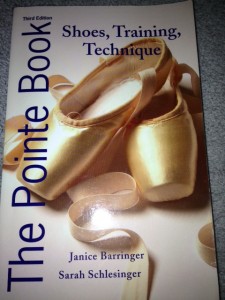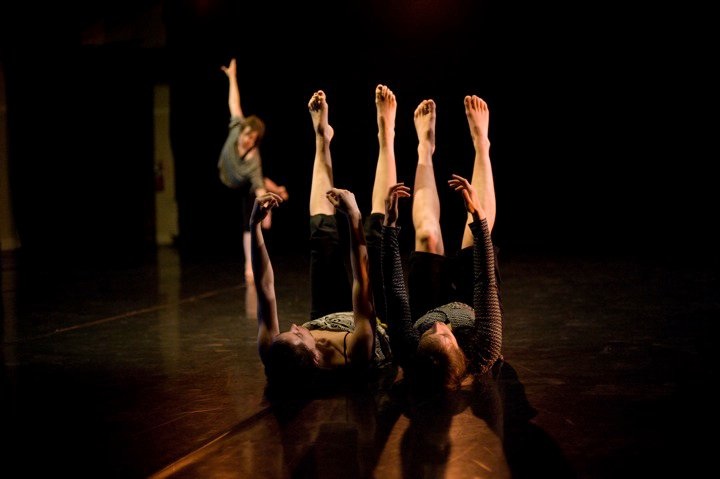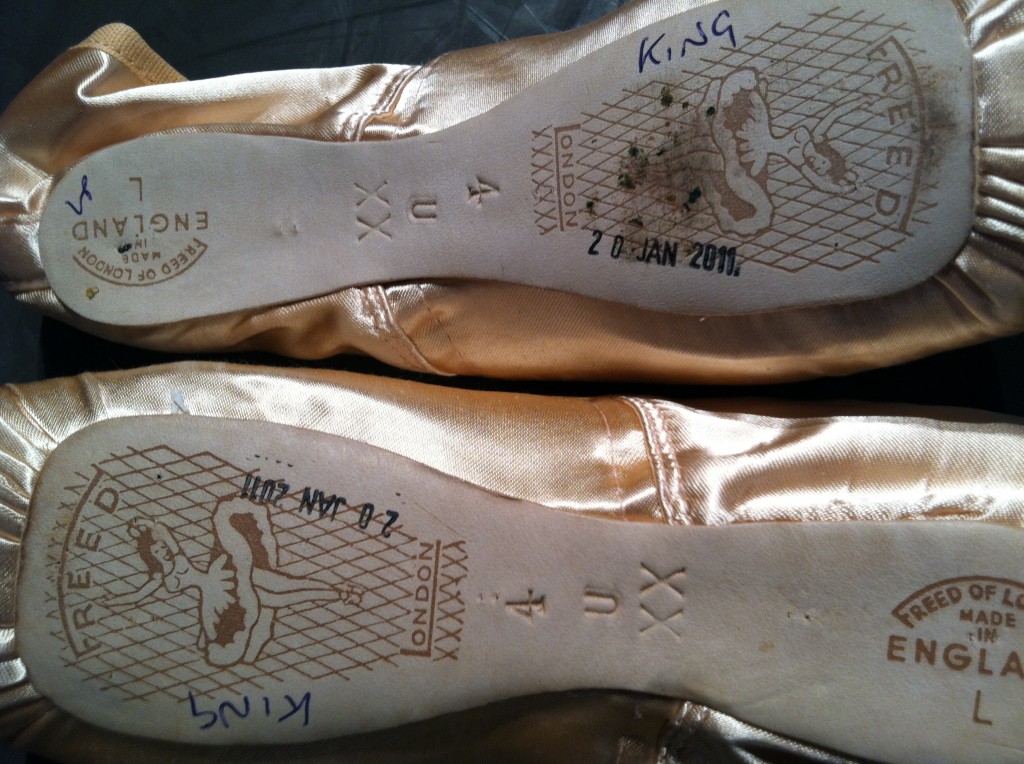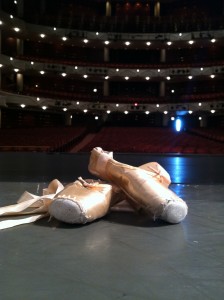Janice Barringer knows more than most people about a subject that is near and dear to the heart of ballet dancers — pointe shoes. She is the author of the most comprehensive book I have ever seen on the subject, The Pointe Book, and since one of our themes this quarter is footwear and foot care, it seemed only natural that she should be the person to talk about pointe shoes…
I’m sure readers will find some interesting tidbits in the interview below!
 Where did the idea come from to write this book?
Where did the idea come from to write this book?
A dear friend of mine, Sarah Schlesinger, was a writer, a lyricist and the owner of a Capezio Dance Store. Her mother was a ballet teacher and her godparents were part owners of Capezio. She knew I had contacts in the ballet world, and also felt strongly that a book about pointe shoes needed to be written. Several customers were furious that the shoes they had bought from her store were wearing out. The father of one ballet student actually struck an employee in anger because he thought they had been cheated—–given defective shoes. Sarah said, “if only there was a book that I could pull out to prove that pointe shoes are built to wear out. This was before some of the new types of long-lasting shoes were on the market.
She repeatedly asked if I would take on this project. At the time I was dancing professionally and teaching a guest class now and then. The idea of writing a book did not interest me even though Sarah said she would write the proposal, and guide me if I provided the information. (The Second and Third Editions I wrote by myself). One day I was in my chiropractor’s waiting room. Dr. Nathan Novick was a kindly, older man that took care of many professional dancers as well as his normal clientele. There sat Martine Van Hamel right across from me. I have no idea why, but suddenly I decided, “today I’m starting the book about pointe shoes.” I grabbed some scratch paper and asked Martine if she would tell me what shoes she wore, what size, how did she prepare the ribbons, elastics, what did she do to break them in, what kind of padding did she use etc. She answered graciously, and the book began. I couldn’t wait to call Sarah to tell her that the inspiration had struck!
From there it was easy. David Howard was my teacher and his classes were and still are filled with some of the greatest dancers in the world. I saw them everyday. In the dressing room at the end of class I would ask dancers all about their shoes. Alessandra Ferri had just finished the movie, “Dancers”, and she told me in detail all about her shoe issues, and also about something that was new to me at the time—-vamp elastic. After talking to many wonderful dancers, I decided I needed to go to the leading schools to find out how they set up their pointe programs. Since I was in New York, I started with The School of American Ballet.
It snow-balled from there. I kept getting ideas of knowledgeable people to interview and no one ever turned me down. The two years that followed were the most exciting years of my life. I went all over the country and to Europe twice. As I interviewed leading dancers, teachers, directors of schools, owners of pointe shoe companies, and medical professionals, I also attended performances, rehearsals, classes, meetings of the greatest people in the ballet world.
What are the main topics that this book covers?
It begins with a short history of pointe work. There are some humorous moments in this chapter. It then moves to the structure of the foot and the pointe shoemaking process, fitting, preparing and caring for the shoes. Top teachers like David Howard, Suki Schorer, Peff Modelski and others have contributed to The Basics of Teaching Pointe chapter. There’s a chapter with interviews of the men in charge of pointe shoes for both American Ballet Theatre and The Birmingham Royal Ballet where they tell us all kinds of amazing facts about securing, dying, and caring for shoes for their dancers. I have put in a chapter that is 44 pages long that is called Pointe Shoe Characteristics. This is a cross-reference which helps a dancer find the shoe that will best meet her requirements. It has categories in it such as very narrow shoes, very wide shoes, shoes for high insteps, shoes for a longer second toe, very light shoes, unusual shoes, long-lasting shoes and on and on. There is a chapter about the pointe programs in many major ballet schools. Included in this is The Paris Opera Ballet School, the Royal Ballet School, The School of American Ballet, Canada’s National Ballet School, The Goh Ballet Academy in Canada, The Kirov Ballet Academy in Washington D.C., and many others. I have notated classes I observed at the Jacqueline Kennedy Onassis School at American Ballet Theatre, The San Diego Ballet School, Ballet School, NY, and others. In this chapter there is a very informative interview of Franco De Vita, Principal of the JKO School. Other chapters include pointe shoe accessories, a pointe shoe sizing chart, pointe related injuries and their remedies and conversations with leading ballet dancers about their shoes, their feet and how they solved their pointe shoe issues.
What was the most surprising thing you learned while writing the book? [Read more…]








